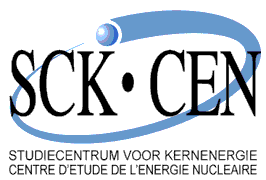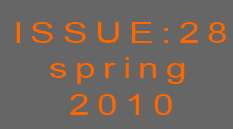

Production of radioisotopes in the Belgian BR2 high-flux research reactor for applications in nuclear medicine and industry
Introduction
The Belgian Reactor 2, or “BR2,” which is operated by the Belgian Nuclear Research Centre, SCK•CEN, in Mol, became operational in 1961. It is a100 MWth high-flux materials testing reactor and one of the most powerful research reactors in the world. BR2 is operated within the framework of programmes aimed at promoting the development of structural materials and nuclear fuels for fission and fusion reactors.
Together with four other reactors BR2 is responsible for the production of 90% of the radioisotopes that are used worldwide as part of nuclear medicine’s diagnostic and treatment capability. The BR2-reactor is also a major supplier worldwide of isotopes for use in industry and of Neutron Transmutation Doped (NTD) silicon. BR2's present annual operating regime is based on six irradiation cycles, i.e. 140 operating days per year. The reactor uses 93 % 235U-enriched uranium as fuel and is moderated by light water and beryllium. A serious effort has also been made to perform the above-mentioned commercial activities in accordance with a 'Quality System' that has been certified to the requirements of the "EN ISO 9001:2000".
Production of radioisotopes
The availability of thermal neutron fluxes up to 1015n/cm²s allows an important routine production of radioisotopes characterised by highly specific activities for medical and industrial applications. A standard irradiation cycle consists of 3 or 4 weeks operation at an operating power between 55 and 70 MWth, depending on the core configuration, which is easily adapted to the experimental load.
The targets for the production of radioisotopes are supplied by the customers and loaded into suitable irradiation capsules. After commissioning tests, the capsules are loaded and irradiated in dedicated devices. Some of them allow their loading and unloading during the operation of the reactor. After irradiation, temporary storage for cooling and, if required, passage through the BR2 hot-cells for decanning (recovering of the target material from the irradiation capsules), the targets are loaded into suitable shipping containers and returned to the customers for processing.
Major radioisotopes produced in the BR2-reactor
The major isotope produced in the BR2-reactor is 99Mo (half-life time T1/2 = 66 h). It is obtained by the irradiation of highly-enriched uranium targets (93% 235U) of 4-5 g 235U. Six irradiation devices are routinely loaded in reflector channels, providing a total irradiation capacity of 75 targets at the same time. A typical irradiation of 150 h in a thermal neutron flux of 2.5 x 1014 n/cm²s yields up to 1000 Ci of 99Mo per target following irradiation.
In their processing facilities customers recover the 99Mo activity in order to manufacture 99Mo/99mTc (T1/2 = 6 h) generators, the most important diagnostic tool in nuclear medicine. Other fission isotopes produced are 131I (T1/2 = 8.02 days) for thyroid cancer therapy and 133Xe (T1/2 = 5.24 days) for diagnostic imaging of the lung function. The production of 192Ir (T1/2 = 74 days) for industrial applications (mainly testing of welds) consists of the irradiation of iridium discs in the six peripheral channels of the central beryllium plug H1 of the reactor, characterised by thermal neutron fluxes of up to 1015n/cm²s.
The BR2-reactor is taking care of the shortage in radioisotopes supply in 2010
Five nuclear reactors produce most of the worldwide supply of Molybdenum-99, from which Technetium-99m is derived. These are HFR (Petten; the Netherlands), BR2 (Mol; Belgium), OSIRIS (Saclay; France), NRU (Chalk River; Canada) and SAFARI-1 (Pelindaba; South Africa).
Certain circumstances have lead to a temporary shutdown of the Dutch reactor in Petten for 6 months, which started in February 2010. The Canadian reactor was also stopped in May 2009 and is scheduled to restart in July 2010. This affects the worldwide supply of, for example, Tc-99m, the most used isotope in nuclear medicine. So, SCK•CEN has decided to increase the production in the BR2-reactor in agreement with the other European partners who process the isotopes. With this substantial increase, BR2's averaged yearly 99Mo production capacity will raise from 15% up to 25% of the world demand.
What next after the BR2 reactor?
In a European context SCK•CEN is developing MYRRHA (Multi-purpose hYbrid Research Reactor for High-tech Applications), a multi-functional experimental irradiation facility. MYRRHA is the world’s first prototype of a nuclear reactor that is driven by a particle accelerator. This method is called Accelerator Driven System or ADS - a very safe and controllable nuclear technology. The MYRRHA project started in 1997 and it aims to become fully operational around 2023. In time MYRRHA will, therefore, replace the BR2-reactor for the production of radioisotopes and for various research programmes. The system will guarantee services to, and the training of, a new generation of scientists and engineers. This new project also contributes to research into reactor safety, to the development of fusion technology and to fundamental research in various fields of science. The Belgian Federal Government recently agreed to support the MYRRHA project by allocating 60 M € for a detailed elaboration of the construction of this important Large Scale Research Infrastructure.
Third symposium on Medical Radioisotopes: A service to the public
Brussels, May 7, 2010
This symposium on medical radioisotopes aims:
-
To encourage information exchange about existing bottlenecks and/or potential shortages in the service to the public: factors which endanger the security of supply of medical radioisotopes, inadequate harmonisation of transport regulations, insurance costs, and problems related to the transport safety management
-
To present new ideas and initiatives to overcome these bottlenecks and/or potential shortages
-
To formulate recommendations in the above areas
For more information see www.sckcen.be/en/Events/SYM_MRI3
Intended audience
The third symposium focuses on the security of medical radioisotopes production and supply. This includes technical, legal, financial and safety issues relating to the transport of these radioisotopes. It is intended for European and Belgian health authorities, regulators, transportation companies, radioisotopes producers and users. The interest of the potential participants will be stimulated by the presentation of some practical recommendations that will be discussed during the symposium.
The symposium is organized by SCK•CEN, ISI, IRE, IBA, EITA and BNS.
Venue
Auditorium of the Royal Military School
KMS-ERM
Avenue Renaissance 30
BE-1000 BRUSSELS
(Entrance via Rue Hobbema 8)
Parking: Esplanade Jubelpark/ Parc du Cinquantenaire
www.rma.ac.be
For more information on the production of radioisotopes in the BR2 reactor, please contact
Bernard PONSARD
Project Manager "Radioisotopes & NTD Silicon"
SCK•CEN – BR2 Reactor
Boeretang 200
B-2400 Mol, Belgium
Tel: +32 14 33 24 30
Fax: +32 14 32 05 13
E-mail: bponsard@sckcen.be
|

